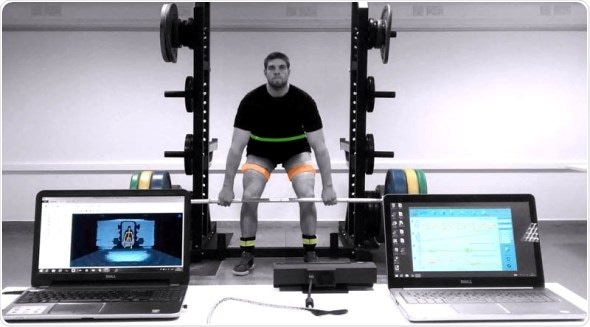Technology in Strength and Conditioning: Tracking Lower Limb Exercises with Wearable Sensors
Strength and conditioning training is often a highly important part of both amateur and professional athletes’ training regimes, however due to financial and time constraints, many individuals train without the support and supervision of professional coaches. This can have a considerable negative impact on exercise technique and can increase the risk of injury. PhD researcher and long-time Shimmer user Martin O’Reilly has recently published his latest research on the use of Shimmer IMUs for biofeedback in strength and conditioning (S&C) training. The study examines how inertial measurement units (IMUs) can be used to accurately distinguish between particular S&C exercises – opening up possibilities for real time feedback, workout recording and remote supervision from S&C coaches.

The study identifies a potential alternative to dedicated S&C training and supervision which is usually provided in-person by qualified coaches. The most common current method for tracking S&C progress is through the use of paper based or computerized logbooks. O’Reilly’s research opens up the possibility for highly accurate recording of workouts and real-time feedback using wearable IMU systems. Cloud services could also be utilized to allow feedback from a separate location. This could take the pressure off coaches, as well as providing a quantitative method for recording workouts.
82 healthy individuals were recruited to take part in this study. Shimmer wireless IMUs were placed on 5 areas of each of the participant’s bodies – one on the lumbar spine, one on each thigh and one on each shank. Tests were performed with between 1 and 5 IMUs placed in different combinations on the body. Participants were instructed to complete 10 repetitions of a series of 5 different exercises:
1. Bodyweight Squats
2. Body-weight Lunges
3. Barbell Deadlifts
4. Single-leg Squats
5. Tuck Jumps
Nine signals were collected from each IMU; accelerometer x, y, z, gyroscope x, y, z, and magnetometer x, y, z. and filtered at Fc = 20Hz using a Butterworth filter of order n=8. Nine more signals were derived from these resulting in a total of 18 signals per IMU. 19 features were computed per exercise repetition for each signal from each IMU. This resulted in a total of 1710 features (342 per IMU, 19 per signal). These features were then used to develop and evaluate a variety of classifiers.
The quality of the exercise classification system was established using leave-one-out-cross-validation (LOSOCV) and the random forests classifier with 400 trees. Feature importance was also calculated to reduce model complexity and develop an understanding of which features are most valuable for correct classification outcomes.
The research findings show that using the IMU signals, each exercise could be distinguished with 99.7% accuracy when using 5 IMU sensors, 98.7% when using 3, and 98.2% when using a single IMU sensor.
This is not the first time that research has been conducted to identify whether wearable IMU sensors were capable of identifying individual exercises; however O’Reilly’s research shows a marked improvement in the accuracy of exercise detection when compared to previous studies. This improvement is potentially due to the use of dedicated research devices as opposed to less accurate IMUs or smart phones. Additionally, and in contrast to previous work, O’Reilly’s studies show that highly accurate exercise classification (98%) can be achieved with a single IMU.
This study is just another fantastic example of a real-life application for Shimmer technology and could be of huge benefit to gym goers, strength and conditioning coaches and even rehabilitation professionals, as all five exercises investigated in this study are commonly used within rehabilitation. Studies like this one show how wearable sensors can be used to make strength and conditioning training safer and more efficient and opens up more possibilities for additional wearable applications in physical activity monitoring.